
Bovey Tracey is a small town and civil parish in Devon, England, on the edge of Dartmoor, its proximity to which gives rise to the "slogan" used on the town's boundary signs, "The Gateway to the Moor". It is often known locally as "Bovey". It is about 10 miles south-west of Exeter and lies on the A382 road, about halfway between Newton Abbot and Moretonhampstead. The village is at the centre of the electoral ward of Bovey. At the 2011 census the population of this ward was 7,721.

Elize Hele (1560–1635) of Fardel in the parish of Cornwood, Devon and of Parke in the parish of Bovey Tracey, Devon, was an English lawyer and philanthropist. In 1632 he transferred his lands into a trust intended for "pious uses", from which charitable action and in order to distinguish him from his many prominent relations, he became known to posterity as "Pious Uses Hele", which his biographer Prince looked upon "as a more honourable appellation than the greatest empty title". The trustees included his wife, together with John Hele and a number of friends. The trust was used to create a number of schools in Devon including Plympton Grammar School.

Sir George Carey, of Cockington in the parish of Tor Mohun in Devon, England, was Lord Deputy of Ireland from May 1603 to February 1604.

Thomas Ridgeway, 1st Earl of Londonderry was an English administrator active in Ireland, in particular in the Ulster Plantation.
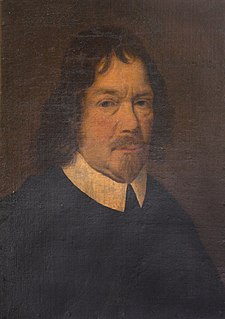
Sir William Pole (1561–1635) of Colcombe House in the parish of Colyton, of Southcote in the parish of Talaton and formerly of Shute House in the parish of Shute, both in Devon, was an English country gentleman and landowner, a colonial investor, Member of Parliament and, most notably, a historian and antiquarian of the County of Devon.
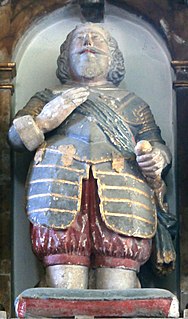
Sir William Strode (1562–1637) of Newnham in the parish of Plympton St Mary, Devon, England, was a member of the Devon landed gentry, a military engineer and seven times a Member of Parliament elected for Devon in 1597 and 1624, for Plympton Erle in 1601, 1604, 1621 and 1625, and for Plymouth in 1614. He was High Sheriff of Devon from 1593 to 1594 and was knighted in 1598. In 1599 he was appointed Deputy Lieutenant of Devon. There is a monument to him in the parish church of Plympton St Mary.

Sir John Davie, 2nd Baronet (1612–1678) of Creedy in the parish of Sandford, Devon, was Member of Parliament for Tavistock, Devon, in 1661 and was Sheriff of Devon from 1670 to 1671.
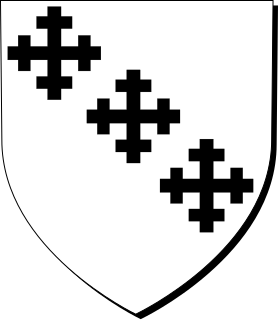
Sir Arthur Northcote, 2nd Baronet (1628–1688) was a baronet from Devon, England. He resided at Hayne in the parish of Newton St Cyres, Devon, which mansion house has since been demolished, and also at King's Nympton, Devon, which manor he purchased from Sir Hugh Pollard, 2nd Baronet, his father's first cousin, and where he was buried.

John Northcote (1570-1632) of Uton and Hayne, Newton St Cyres, near Crediton, Devon, was a member of the Devonshire gentry, lord of the manor of Newton St Cyres, who is chiefly known to history for his artistically acclaimed effigy and monument in Newton St Cyres Church. Little or no documentary evidence concerning his career as a soldier or county administrator has survived, but either he or his identically named son was Sheriff of Devon in 1626, his own tenure of that office being suggested by the baton or staff of office held in the hand of his effigy. Such a baton is also held by the effigy of Lord Edward Seymour (d.1593), Sheriff of Devon in 1583, in St Mary's Church, Berry Pomeroy. He was ancestor of the Earls of Iddesleigh.

Creedy is an historic estate in the parish of Sandford, near Crediton in Devon. It is named from its location on the west side of the River Creedy. It was the seat of the Davie family from about 1600 until the late 20th century. The mansion house on the estate has been called at various times New House, Creedy House, and as presently, Creedy Park. It was first built in about 1600, rebuilt in 1846, burnt down in 1915 and rebuilt 1916–21. It is surrounded by a large park, the boundary of which is enclosed by a stone and brick wall several miles long.

Mohuns Ottery or Mohun's Ottery, is a house and historic manor in the parish of Luppitt, 1 mile south-east of the village of Luppitt and 4 miles north-east of Honiton in east Devon, England. From the 14th to the 16th centuries it was a seat of the Carew family. Several manorial court rolls survive at the Somerset Heritage Centre, Taunton, Somerset.

Nicholas Carew was a baron of medieval England who took part in the Wars of Scottish Independence.
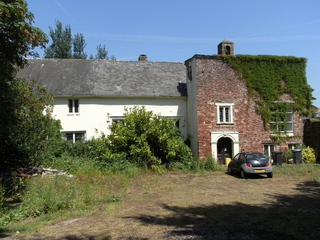
Blagdon historically in the parish of Paignton in Devon, England, is an historic manor, the seat of the Kirkham family from the 13th to 17th centuries. The manor house known as Blagdon Manor (House) survives as a grade II* listed building about two miles west of the historic centre of the town of Paignton, situated behind the "Blagdon Inn" public house, and almost surrounded by the "Devon Hills Holiday Park" of caravans and mobile homes, set-back at the end of a short driveway off the A385 Paignton to Totnes road. The settlements or farms of Higher Blagdon, Middle Blagdon and Lower Blagdon are situated to the north of the manor house.
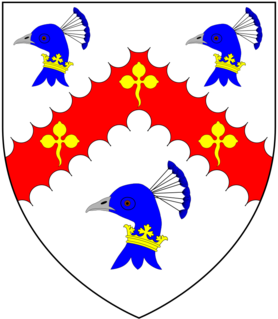
John Ridgeway of Abbots Carswell and Tor Mohun in Devon, was a lawyer who served as a Member of Parliament, twice for Dartmouth in 1539 and 1545 and twice for Exeter in 1553 and 1554.

Tor Mohun is a historic manor and parish on the south coast of Devon, now superseded by the Victorian sea-side resort of Torquay and known as Tormohun, an area within that town. In 1876 the Local Board of Health obtained the sanction of Government to alter the name of the district from Tormoham (sic) to Torquay.

Sir John Kirkham (1472–1529) of Blagdon in the parish of Paignton, Devon, was Sheriff of Devon in 1523/4. He was one of the Worthies of Devon of the Devonshire biographer Prince (d.1723), who called him a "very free and liberal, ... prudent and discreet" benefactor of the town of Honiton in Devon.
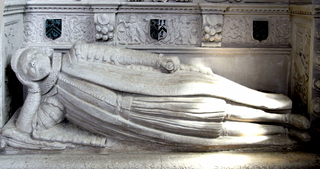
Nicholas Eveleigh (1562–1618) of Parke in the parish of Bovey Tracey in Devon, was an utter barrister, and served as Steward of the Stannary Court of Ashburton, Devon. He died aged 56 when the roof of Chagford Stannary Courthouse collapsed, killing him and nine others. His "sumptuous" monument survives in Bovey Tracey Church.
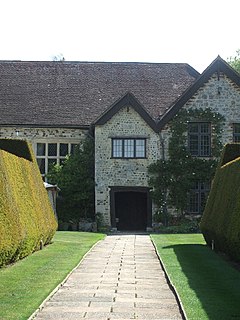
Knightstone is an historic manor in the parish of Ottery St Mary in Devon. The surviving mediaeval and Tudor grade I listed manor house is situated one mile south-east of St Mary's Church, Ottery St Mary. It was the seat of the Bittlesgate family, the heiress of which Joan Bittlesgate, daughter of Thomas Bittlesgate by his wife Joan Beauchamp, was the wife of Richard Woodville, grandfather of Elizabeth Woodville (c.1437-1492) Queen consort of England as the spouse of King Edward IV. In 1381 the Bittlesgate family obtained a licence from the Bishop of Exeter to build and operate a private chapel at their home, but no trace of the structure survives. The house has been much altered since the time of the Bittlesgate family. One Tudor-era fireplace survives in a bedroom.

Southcott is a surname of a prominent family from the English counties of Devon and Cornwall.

John Southcote of Bovey Tracey was an English politician and landowner.






















